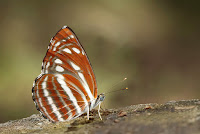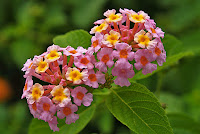<> Neptis nata Moore,1857 <>
the Sullied Brown or Clear Sailer ผีเสื้อกะลาสีตาลใต้เรียบ
Click on any photo to see larger version

Photo taken at Doi Suthep-Pui National Park, Chiang Mai, Thailand. 620m a.s.l.

Although it is distributed across a large part of the region, this species is not common. There is little difference between the sexes and they look similar to each other. There is not much information available but probably multivoltine with several broods per annum.
Synonyms and previously used names: Neptis nandina, Neptis egestas
Taxonomy: Animalia - Arthropoda - Insecta - Lepidoptera - Nymphalidae - Limenitidinae - Neptis - nata
Regional Distribution: India,Nepal, Bangladesh, Myanmar, Thailand, Laos, Cambodia, Vietnam, China, Taiwan, Malaysia, Indonesia, Philippines
Habitat: deciduous forest, grassland, and hillsides, up to 2000m a.s.l. Wingspan: 40-50mm
Flight time: most of the year, depending on location
Larval Hosts: Aphananthe aspera, Celtis sinensis, Celtis tetrandra, Trema orientale (Cannabaceae), Dalbergia sissoo, Mucuna macrocarpa, Phanera championii, Pongamia pinnata, Pterocarpus vidalianus, Pueraria montana, Puhuaea sequax (Fabaceae), Sterculia lanceolata (Malvaceae), Boehmeria nivea (Urticaceae), Bridelia balansae (Phyllanthaceae), Combretum indicum (Combretaceae), Callicarpa formosana (Lamiaceae), Zelkova serrata (Ulmaceae). Hosts used depends upon location and availability of plant species.
Adult Food Sources: Nectar - Lantana camara (Verbenaceae). There are undoutedly other flowers visited but as yet have not been recorded. Other - mud puddling, honeydew on citrus trees
Links to other pages in this series for species in the same subfamily
Athyma perius
Auzakia danava
Euthalia alpheda
Euthalia lubentina
Lasippa viraja
Limenitis asura
Neptis cartica
Neptis miah
Pantoporia hordonia
Sumalia daraxa
Athyma pravara
Bhagadatta austenia
Euthalia anosia
Euthalia monina
Lebadea martha
Limenitis dudu
Neptis clinia
Neptis nashona
Pantoporia paraka
Sumalia zulema
Athyma ranga
Cynitia cocytus
Euthalia evelina
Euthalia patala
Lexias dirtea
Moduza procris
Neptis hylas
Neptis nata
Parthenos sylvia
Tanaecia jahnu
Athyma selenophora
Euthalia aconthea
Euthalia franciae
Euthalia phemius
Lexias pardalis
Neptis ananta
Neptis magadha
Neptis soma
Phaedyma columella
Tanaecia julii




